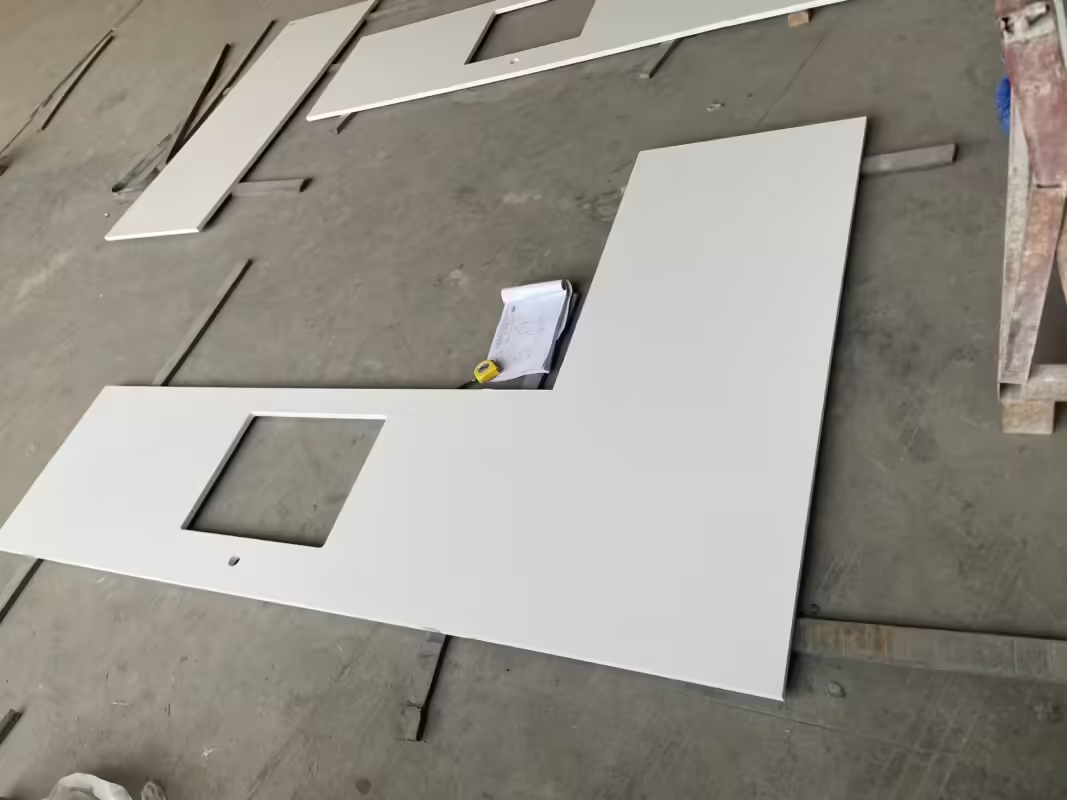Blog
The Use of Artificial Quartz Stone in Commercial Building Design

Artificial quartz stone is increasingly popular in the realm of commercial building design, offering both aesthetic allure and functional advantages. This engineered stone, composed of quartz particles bonded with resin, is not just durable but also versatile, making it an ideal choice for a variety of applications in commercial settings. In this blog post, we’ll explore why artificial quartz stone is becoming a go-to material for architects and interior designers in commercial projects.
Aesthetic Flexibility
One of the significant benefits of artificial quartz stone is its vast range of design possibilities. Unlike natural stone, which is limited to the patterns formed by nature, artificial quartz can be manufactured in an extensive array of colors, patterns, and finishes. This versatility allows designers to create bespoke interiors that align precisely with a brand’s identity or the architectural vision of a space. Whether the goal is to mimic natural stone or to opt for something entirely avant-garde, quartz can be tailored to meet these aesthetic requirements.

Durability and Maintenance
In high-traffic commercial environments like hotels, offices, and retail spaces, durability is crucial. Artificial quartz stone excels in this regard due to its hard, non-porous surface, which resists scratching, staining, and wear-and-tear much better than many natural stones. This makes it an ideal choice for countertops, flooring, reception areas, and bathroom surfaces in commercial buildings.
Moreover, the ease of maintenance associated with quartz is a significant advantage. Unlike natural stones that require regular sealing and specific cleaning agents, quartz can be cleaned effortlessly with soap and water. This aspect is especially beneficial in commercial settings where ease of maintenance and hygiene are paramount.
Cost Effectiveness
While the initial cost of artificial quartz stone might be higher than some alternative materials, its longevity and minimal maintenance requirements present a cost-effective solution in the long run. For commercial projects, reducing the frequency and cost of repairs and replacements can lead to substantial savings, making quartz a financially savvy choice for business owners and property developers.

Sustainability and Safety
As businesses increasingly prioritize sustainability, the choice of building materials becomes more critical. Artificial quartz is often seen as a more sustainable option compared to natural stone due to its lower quarrying impact and the possibility of using recycled materials in its production. Additionally, its durability means that it does not need to be replaced as frequently, contributing to less waste over time.
Safety is another crucial factor in commercial design, and quartz is inherently non-porous, which prevents the growth of bacteria, mold, and mildew. It also generally contains low levels of volatile organic compounds (VOCs), ensuring better indoor air quality compared to materials that off-gas chemicals.
Conclusion
The use of artificial quartz stone in commercial building design reflects a blend of aesthetic flexibility, practical durability, and economic efficiency. Its ability to adapt to diverse design requirements while providing a cost-effective, sustainable, and safe material choice makes it a standout option in the commercial construction industry. As we look towards the future of commercial interiors, artificial quartz stone is set to play a pivotal role, harmonizing beauty and functionality in the spaces where we work, shop, and interact.